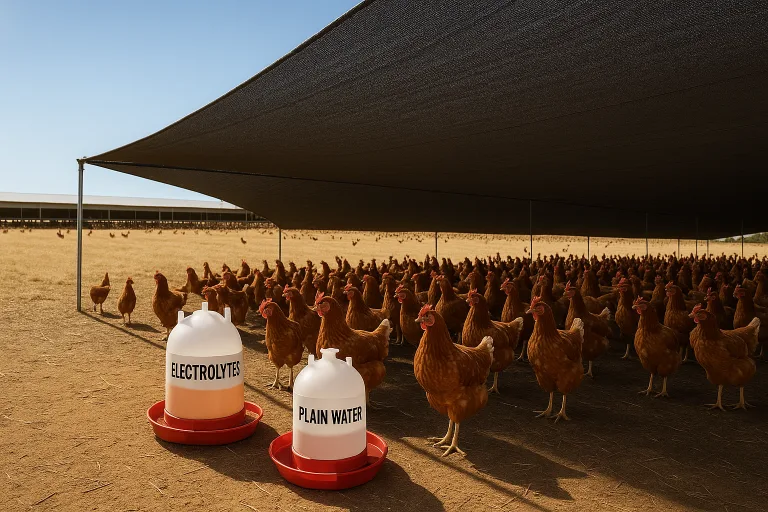Crack the Competition: Master the Art of Egg Pricing
Setting the right price for your eggs can be a challenging task in today's competitive market. As an egg producer, it is essential to master the art of egg pricing to ensure profitability and success.
In this article, we will explore various strategies and insights that will help you crack the competition and navigate the complexities of pricing your eggs effectively. From researching local competitors and utilizing valuable USDA pricing resources to considering different factors and places to sell your product, we will provide you with the tools and knowledge you need to make informed pricing decisions.
So, get ready to unlock the secrets of egg pricing and stay ahead of the competition.
Researching Local Competitors
When determining the optimal pricing strategy for your eggs, it is crucial to conduct thorough research on local competitors in order to make informed decisions. This involves performing a comparative analysis and pricing benchmarking to understand the market landscape and position your products competitively.
Start by noting the pricing of home-based sellers, farm stores, farmers markets, and co-ops in your area. It's important to strike a balance between staying competitive with local competitors while covering costs like feed and housing. Aim to position your prices in the middle of the pricing range, as being the lowest may not cover basic costs.
Additionally, consider that customers may be more familiar with grocery store prices, so being aware of them can be helpful. By basing your pricing off bigger brands, you can maintain competitiveness while acknowledging the value of your product. Remember, don't undervalue your eggs as people may be willing to pay a higher price.
Conducting thorough research on local competitors will enable you to make strategic pricing decisions for your egg business.
Utilizing USDA Pricing Resources
The USDA provides a comprehensive range of egg pricing information that can be utilized to make data-driven and strategic pricing decisions for your egg business. By using USDA data for market analysis, you can gain valuable insights into pricing trends and consumer preferences.
Here are two ways that you can leverage the USDA's pricing resources:
- Access to National and Regional Pricing: The USDA website offers access to national and regional egg pricing data, allowing you to stay informed about the market. This information can help you understand price fluctuations and competitive dynamics in different areas.
- Sales and Production Data: The USDA provides detailed information on egg sales and production, giving you a deeper understanding of supply and demand dynamics. By analyzing this data, you can identify opportunities to optimize your pricing strategy and meet customer preferences.
Factors to Consider for Pricing
One crucial aspect to consider when setting the price for your eggs is factoring in the various costs associated with your egg production, such as packaging, marketing, labor, and feed expenses. Calculating costs accurately is essential to ensure that your pricing covers all necessary expenses and helps you achieve profitability.
Additionally, it is crucial to consider price elasticity, which refers to the sensitivity of demand to changes in price. Understanding price elasticity can help you determine the optimal pricing strategy for your eggs. By analyzing data on costs and price elasticity, you can make informed decisions about pricing that will maximize your revenue while remaining competitive in the market.
Taking these factors into account will enable you to set a fair and profitable price for your eggs.
Places to Sell Eggs and Pricing Strategies
Considering the factors that contribute to pricing, it is essential to explore the various places where you can sell your eggs and implement effective pricing strategies to ensure the success and profitability of your egg business.
Here are some pros and cons of selling eggs at farmers markets vs. farm stores:
Farmers markets:
- Pros:
- Opportunity to directly interact with customers and build relationships.
- Higher visibility due to foot traffic.
- Cons:
- May charge a small table fee, which should be factored into pricing.
- Limited selling window and competition from other vendors.
Farm stores:
- Pros:
- Cost-saving option as it eliminates the need for market fees.
- Potential for repeat customers.
- Cons:
- Finding customers may be more challenging compared to farmers markets.
- Limited visibility compared to farmers markets.
When it comes to pricing strategies for online egg sales, consider factors such as packaging and shipping costs, as well as competition from other online sellers. Offering discounts for bulk orders or subscription-based models can be effective in attracting and retaining customers.
Regularly evaluating and adjusting your pricing strategy based on market trends and customer feedback is crucial for long-term success.
Wholesale Pricing and Targeting Restaurants
Wholesale pricing and targeting restaurants can be strategic approaches for expanding your egg business and maximizing profitability.
Implementing wholesale pricing benefits your business by offering slightly cheaper prices for higher volume sales, typically around 10% off. This attracts customers who require large quantities of eggs, such as restaurants and bakeries.
Establishing relationships with restaurants is crucial in securing consistent and lucrative wholesale contracts. By providing high-quality eggs at competitive prices, you can become their preferred supplier.
To effectively target restaurants, it is essential to understand their specific needs and requirements. Analyzing their purchasing patterns, volume demands, and preferred delivery schedules can help tailor your pricing and service offerings.
Regular Evaluation and Adjustment of Pricing
To ensure the long-term success and profitability of your egg business, it is crucial to regularly evaluate and adjust your pricing strategy. This involves keeping a close eye on pricing trends and taking into account customer feedback.
Here are two key considerations for evaluating and adjusting your egg pricing:
- Pricing trends:
- Monitor the market to identify any changes in pricing patterns that may affect your business.
- Stay informed about industry trends, such as fluctuations in feed costs or changes in consumer demand, to make informed pricing decisions.
- Customer feedback:
- Actively seek feedback from your customers to understand their perception of your pricing.
- Consider conducting surveys or engaging in direct conversations to gather valuable insights on their willingness to pay and their satisfaction with your pricing.
General Tips for Pricing Eggs
When determining the pricing for your eggs, it is important to consider various factors such as production costs, market demand, and customer perception.
Remember that your product is worth as much as people are willing to pay, and they might be willing to pay a higher price. While it is necessary to be aware of the prices offered by grocery stores, it is crucial not to undervalue your eggs. People may be willing to pay a higher price for quality and locally produced eggs.
Determining the value of your product is essential, as customer perception plays a significant role in pricing. By positioning your eggs as a premium and high-quality product, you can justify a higher price point.
Conclusion
In conclusion, mastering the art of egg pricing requires thorough research. This includes utilizing pricing resources like the USDA and considering various factors such as competition and target market.
It is important to constantly evaluate and adjust pricing strategies to ensure profitability and sustainability. By following these guidelines and implementing effective pricing strategies, egg producers can position themselves competitively in the market and achieve success in their business ventures.

